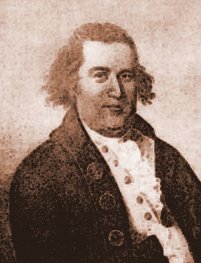
William Dawes Jr. was an American soldier, and was one of several men who, in April 1775, alerted minutemen in Massachusetts of the approach of British regulars prior to the battles of Lexington and Concord at the outset of the American Revolution. For some years, Paul Revere had the most renown for his ride of warning of this event.

Joseph Warren, a Founding Father of the United States, was an American physician who was one of the most important figures in the Patriot movement in Boston during the early days of the American Revolution, eventually serving as President of the revolutionary Massachusetts Provincial Congress. Warren enlisted Paul Revere and William Dawes on April 18, 1775, to leave Boston and spread the alarm that the British garrison in Boston was setting out to raid the town of Concord and arrest rebel leaders John Hancock and Samuel Adams. Warren participated in the Battles of Lexington and Concord the following day, the opening engagements of the American Revolutionary War.

Samuel Prescott was an American physician and a Massachusetts Patriot during the American Revolutionary War. He is best known for his role in Paul Revere's "midnight ride" to warn the townspeople of Concord, Massachusetts, of the impending British army move to capture guns and gunpowder kept there at the beginning of the American Revolution. He was the only participant in the ride to reach Concord.

The MassachusettsPowder Alarm was a major popular reaction to the removal of gunpowder from a magazine near Boston by British soldiers under orders from General Thomas Gage, royal governor of the Province of Massachusetts Bay, on September 1, 1774. In response to this action, amid rumors that blood had been shed, alarm spread through the countryside to Connecticut and beyond, and American Patriots sprang into action, fearing that war was at hand. Thousands of militiamen began streaming toward Boston and Cambridge, and mob action forced Loyalists and some government officials to flee to the protection of the British Army. A similar event, also called The Powder Alarm, occurred in Virginia in April, 1775.

The Boston campaign was the opening campaign of the American Revolutionary War, taking place primarily in the Province of Massachusetts Bay. The campaign began with the Battles of Lexington and Concord on April 19, 1775, in which the local colonial militias interdicted a British government attempt to seize military stores and leaders in Concord, Massachusetts. The entire British expedition suffered significant casualties during a running battle back to Charlestown against an ever-growing number of militia.

John Parker was a New England colonial farmer, smith, soldier, and colonial militia officer who commanded the Lexington, Patriot, colonial militia at the Battle of Lexington on April 19, 1775.

The North Bridge, often colloquially called the Old North Bridge, is a historic site in Concord, Massachusetts, spanning the Concord River. On April 19, 1775, the first day of the American Revolutionary War, provincial minutemen and militia companies numbering approximately 400 engaged roughly 90 British Army troops at this location. The battle was the first instance in which American forces advanced in formation on the British regulars, inflicted casualties, and routed their opponents. It was a pivotal moment in the Battles of Lexington and Concord and in American history. The significance of the historic events at the North Bridge inspired Ralph Waldo Emerson to refer to the moment as the "shot heard round the world."
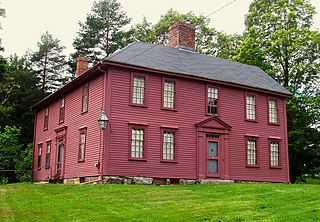
Munroe Tavern, located at 1332 Massachusetts Avenue, Lexington, Massachusetts, is an American Revolutionary War site that played a prominent role in the Battle of Lexington and Concord. It is now preserved and operated as a museum by the Lexington Historical Society, with exhibits highlighting the role and perspective of the British soldiers during the outbreak of the war. The house is open for guided tours on weekends starting in April and daily from Memorial Day weekend until the end of October.

Buckman Tavern is a historic American Revolutionary War site associated with the revolution's very first battle, the 1775 Battle of Lexington and Concord. It is located on the Battle Green in Lexington, Massachusetts and operated as a museum by the Lexington Historical Society.

Major General Francis Smith (1723–1791) was a British Army officer. Although Smith had a lengthy and varied career, he is best known as the British commander during most of the Battle of Lexington and Concord, Massachusetts on 19 April 1775. The fighting ignited the American War of Independence that would see thirteen of Britain's American Colonies become a separate nation.

The Battles of Lexington and Concord was the first major military campaign of the American Revolutionary War, resulting in an American victory and outpouring of militia support for the anti-British cause. The battles were fought on April 19, 1775, in Middlesex County, Province of Massachusetts Bay, within the towns of Lexington, Concord, Lincoln, Menotomy, and Cambridge. They marked the outbreak of armed conflict between the Kingdom of Great Britain and Patriot militias from America's thirteen colonies.
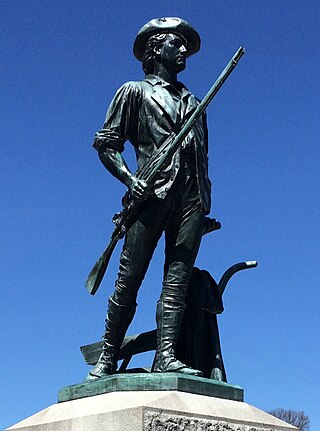
Isaac Davis was a gunsmith and a militia officer who commanded a company of Minutemen from Acton, Massachusetts, during the first battle of the American Revolutionary War. In the months leading up to the Revolution, Davis set unusually high standards for his company in terms of equipment, training, and preparedness. His company was selected to lead the advance on the British Regulars during the Battle of Concord because his men were entirely outfitted with bayonets. During the American advance on the British at the Old North Bridge, Davis was among the first killed and was the first American officer to die in the Revolution.

The Lexington Alarm announced, throughout the American Colonies, that the Revolutionary War began with the Battle of Lexington and the Siege of Boston on April 19, 1775. The goal was to rally patriots at a grass roots level to fight against the British Redcoats and support the minutemen of the Massachusetts militia.
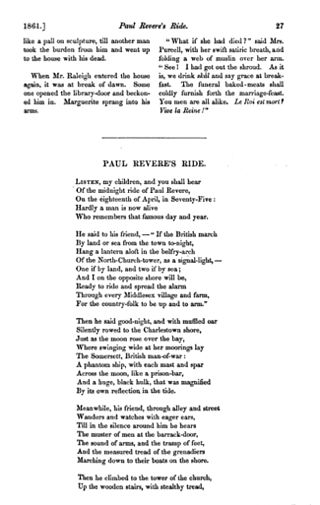
"Paul Revere's Ride" is an 1860 poem by American poet Henry Wadsworth Longfellow that commemorates the actions of American patriot Paul Revere on April 18, 1775, although with significant inaccuracies. It was first published in the January 1861 issue of The Atlantic Monthly. It was later retitled "The Landlord's Tale" in Longfellow's 1863 collection Tales of a Wayside Inn.

John Robinson was a Massachusetts militia and Continental Army officer from Westford, Massachusetts during the American Revolutionary War. On April 19, 1775, during the Battle of Concord, Robinson was the second highest-ranking officer in the field after Colonel James Barrett. Robinson marched next to Major John Buttrick at the head of the American column which advanced on and defeated the British Regulars at the Old North Bridge that day. Robinson would later fight at the Battle of Bunker Hill, serve under General George Washington during the Siege of Boston and, in 1786, he would take part in the agrarian insurrection known as Shays' Rebellion.

Battle Road, formerly known as the Old Concord Road and the Bay Road, is a historic road in Massachusetts, United States. It was formerly part of the main road connecting Lexington, Lincoln and Concord, three of the main towns involved in the American Revolutionary War. It was on Battle Road that thousands of colonial militia and British regulars fought during the redcoats' retreat from Concord to Boston on the morning and afternoon of April 19, 1775.

Minutemen were members of the organized New England colonial militia companies trained in weaponry, tactics, and military strategies during the American Revolutionary War. They were known for being ready at a minute's notice, hence the name. Minutemen provided a highly mobile, rapidly deployed force that enabled the colonies to respond immediately to military threats. They were an evolution from the prior colonial rapid-response units.
Capt. John Trull (1738–1797) was the commander of the Tewksbury, Massachusetts minuteman company on the first day of the American Revolution, at the Battle of Lexington & Concord.
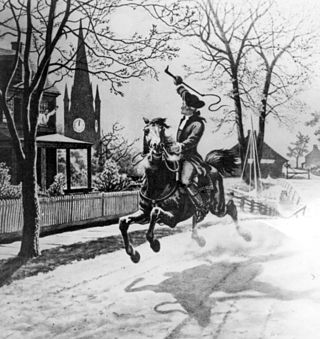
Paul Revere's Midnight Ride was an alert given to minutemen in the Province of Massachusetts Bay by local Patriots on the night of April 18, 1775, warning them of the approach of British Army troops prior to the battles of Lexington and Concord. In the preceding weeks, Patriots in the region gained wind of a planned crackdown on the Massachusetts Provincial Congress, then based in Concord, by the British occupational authorities in the colony.

The Jacob Whittemore House is a historic American Revolutionary War site in Lexington, Massachusetts, United States. It is part of today's Minute Man National Historic Park. It is located on Airport Road, just off Battle Road. It is the only house of the "witness" houses of the April 19, 1775 battles of Lexington and Concord to fall inside the Lexington town line; the others are in Lincoln or Concord.






















